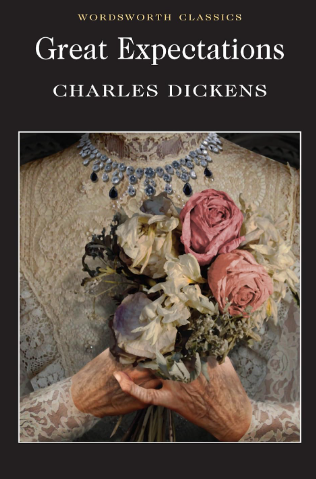Great Expectations

"Great Expectations," first published in serial form from 1860 to 1861, is one of Charles Dickens' most beloved and enduring novels. It tells the story of Philip Pirrip, known as Pip, an orphan raised by his sister and her kind-hearted husband, Joe Gargery, a blacksmith. The novel explores themes of personal growth, social class, and the pursuit of happiness.
The narrative begins with young Pip's encounter with an escaped convict, Magwitch, whom he helps by providing food and a file. Shortly after, Pip is invited to the decaying mansion of Miss Havisham, a wealthy, eccentric woman who was jilted at the altar years before. There, Pip meets and falls in love with Estella, Miss Havisham’s beautiful but cold-hearted ward, who has been raised to break men's hearts.
Pip's life takes a dramatic turn when he is informed by Mr. Jaggers, a lawyer, that he has "great expectations" and will inherit a fortune from an anonymous benefactor. Assuming the benefactor to be Miss Havisham, Pip moves to London to become a gentleman, distancing himself from his humble origins and Joe.
As Pip acclimates to his new life, he grows increasingly ashamed of his past and the people who cared for him. He also deepens his unrequited love for Estella, who remains aloof and marries the brutish Bentley Drummle. Pip’s expectations and the lifestyle they afford him lead to both moral and financial recklessness.
The novel's climax occurs when Pip discovers that his true benefactor is not Miss Havisham, but Magwitch, the convict he helped as a child. Magwitch, transported to Australia, amassed a fortune and returned to England, risking his life to see Pip live the life of a gentleman. This revelation shatters Pip's illusions about wealth and class.
Pip’s journey culminates in his attempt to help Magwitch escape from the authorities, which ends tragically with Magwitch’s capture and death. Following these events, Pip returns home, reconciles with Joe, and learns to appreciate the values of love, loyalty, and humility.
The novel concludes with Pip encountering Estella years later. Dickens wrote two different endings for the novel: the original, more somber one where Pip and Estella part ways permanently, and a revised, more hopeful one suggesting they might remain in each other’s lives.
Dickens excels in creating memorable, multi-dimensional characters. Pip's development from an innocent boy to a disillusioned gentleman and finally to a mature adult is intricately portrayed. Other characters like the tragic Miss Havisham, the loyal Joe, and the complex Magwitch add depth and richness to the narrative.
The novel offers sharp critiques of the class system and the notion that wealth and status bring happiness. Through Pip’s experiences, Dickens explores themes of social mobility, justice, and the true nature of gentility.
"Great Expectations" delves deeply into human emotions and relationships. Pip’s internal conflicts, his yearning for Estella, and his eventual redemption resonate with readers, offering insights into personal growth and the importance of moral integrity.
Dickens’ vivid descriptions, compelling dialogue, and intricate plot construction showcase his literary prowess. The novel’s structure, with its twists and revelations, keeps readers engaged and invested in Pip’s journey.
Some readers may find the novel’s pacing uneven, particularly in its serialized form. Certain sections, especially those detailing Pip’s life in London, can feel slow and overly detailed, potentially detracting from the story’s momentum.
While Dickens’ characters are memorable, some critics argue that they can be overly stereotypical or exaggerated. For instance, characters like the virtuous Joe and the malevolent Orlick are depicted with less nuance compared to more complex figures like Pip and Magwitch.
The plot relies on a series of coincidences and revelations that some may find implausible. The sudden appearance of Magwitch as Pip’s benefactor and the intertwined fates of several characters can strain credibility.
"Great Expectations" remains a masterpiece of English literature, celebrated for its rich characterizations, emotional depth, and incisive social critique. While it has its pacing issues and relies on certain plot conveniences, the novel’s strengths far outweigh its weaknesses. Dickens' exploration of ambition, love, and redemption, set against the backdrop of Victorian society, ensures its enduring relevance and appeal.